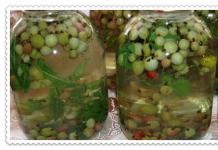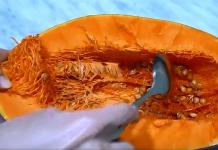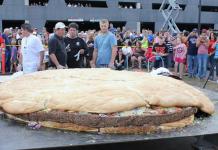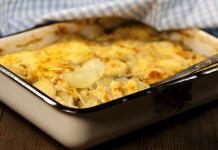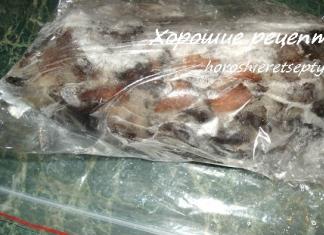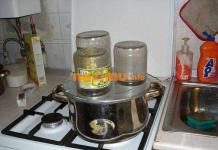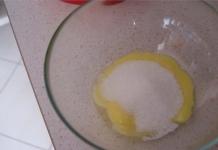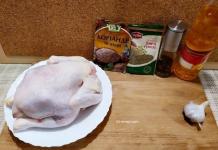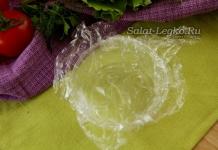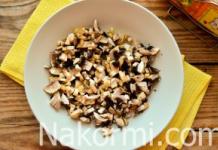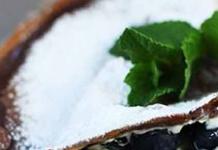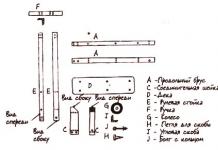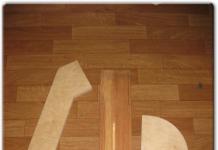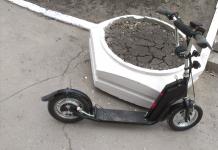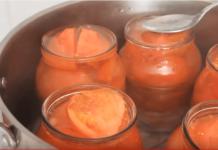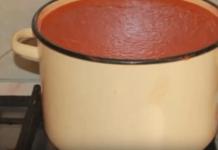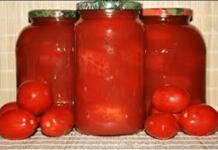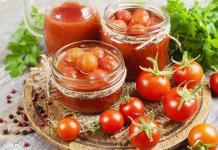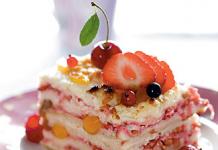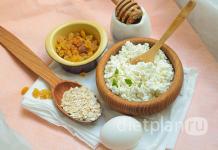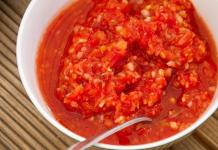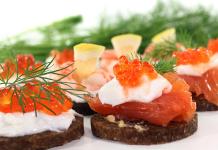Rudbeckia is a herbaceous plant of the Astrov family, which adorns many household plots for a long time. The plant was first discovered by European colonists on the North American continent. Then the flower received other names - "Black-eyed Suzanne" or "Sun hat". Since the end of the 17th century, the plant has been used to decorate park alleys and gardens.
Rudbeckia is grown as an annual, biennial and perennial plant. Rudbeckia has a straight or branched stem, covered with short hairs. Its height can range from a few centimeters to 2.5 meters.
The leaves are large, up to 25 centimeters in length, have a dissected oval or ovoid shape and are colored dark green.
 Particular attention is attracted by the flowers, which have a bright yellow color that turns into brown. Depending on the variety, they can reach 15–20 centimeters in diameter. Flowers can have both a simple ligulate shape and a complex terry one. Flowers can be single or collected in inflorescences in the form of baskets and cups.
Particular attention is attracted by the flowers, which have a bright yellow color that turns into brown. Depending on the variety, they can reach 15–20 centimeters in diameter. Flowers can have both a simple ligulate shape and a complex terry one. Flowers can be single or collected in inflorescences in the form of baskets and cups.
There is perennial rudbeckia with white flowers. This variety is frost-resistant, easily tolerates the first autumn frosts. Usually it is planted in flower beds with a delphinium or along garden paths.
After flowering, seed pods are formed on the plants, which contain small seeds. As they ripen, the seeds are harvested.
Gallery: perennial rudbeckia (25 photos)



























Variety of species
Currently, more than 40 species of this plant are known, most of which are hybrid.

Reproduction of rudbeckia
Reproduction of this plant is carried out by the seed method and by dividing the rhizome.
Growing from seeds in the open field
 Growing rudbeckia from seeds can be carried out immediately by sowing in a flower bed or by pre-growing seedlings in a greenhouse or greenhouse.
Growing rudbeckia from seeds can be carried out immediately by sowing in a flower bed or by pre-growing seedlings in a greenhouse or greenhouse.
Seeds are sown in open ground at the end of June. Prepare the soil first. Rudbeckia seeds are placed in grooves, sprinkled with a thin layer of soil and sprayed with water from a spray bottle. When sown in open ground, the plants will begin to bloom in the second year before the flowers grown by the seedlings. Many gardeners take advantage of the self-seeding ability of rudbeckia. Sprouted seeds must be thinned out or, if necessary, transplanted to a new place.
Rudbeckia requires loose, fertile, well-drained soil. When digging, clay soil is diluted with coarse sand and compost.
With the help of seedlings
For seedlings, seeds are planted at the end of March. Sowing is carried out in containers with nutritious soil. Since the seeds are very small, it is recommended to sprinkle them on the soil surface and sprinkle them with a small layer of substrate. The container is covered with glass or plastic wrap. The optimum temperature for growing seeds is 22 degrees. The top soil layer should be periodically moistened with a spray bottle and opened for ventilation. Condensation should not be allowed to form on the glass surface.
After two true leaves are formed on the seedlings, they are seated and hardened. For this, daily air baths are carried out, which will prepare young plants for growing conditions in the open field.
At the end of May, they plant rudbeckia in open ground.
Experienced gardeners advise you to follow the rules when planting rudbeckia seedlings in open ground:
- The seedlings must be strong and healthy.
- Plants with yellowed leaves should not be planted.
- Shoots should not be elongated.
- It is not recommended to make mineral fertilizing, which can harm the plant.
- In case of prolonged drought, systematically water the plants.
- Make sure that the root system is completely covered with earth.
- For plant growth, use complex fertilizers, strictly following the instructions.
Young plants are resistant to temperature extremes; adult perennials are afraid of frost.
Tall varieties of perennial rudbeckia are planted at a distance of 60–70 centimeters from each other, undersized varieties at a distance of 30 centimeters. When planting, the seedlings are planted at the same depth as in the container. To retain moisture and nutrients, the soil should be mulched with compost.
 During the period of active growth, flowers are not transplanted. Rudbeckia is transplanted in early spring or autumn at the end of flowering. In one place, perennial rudbeckia flowers can grow for up to five years. Over time, a lot of daughter plants grow, and the flowers become cramped.
During the period of active growth, flowers are not transplanted. Rudbeckia is transplanted in early spring or autumn at the end of flowering. In one place, perennial rudbeckia flowers can grow for up to five years. Over time, a lot of daughter plants grow, and the flowers become cramped.
For reproduction by dividing the rhizomes, the mother bush is dug up and the root is divided into several parts. The bushes are planted in separate holes.
Growing and caring for annual rudbeckia
Annual rudbeckia is grown only from seeds. Planting is carried out by seedlings or seeds in open ground.
When planting seeds for seedlings, you should prepare shallow containers and nutrient soil. The use of peat pots is recommended. The soil is warmed up to 15 degrees. To do this, you can spill it with hot water. Rudbeckia seeds are placed on the surface and pressed lightly into the soil. After sowing, watering is not carried out. Sprouts appear in 10-15 days. Containers should be placed in a warm room and hardened by taking containers out into the open air.
 Seedlings are planted in open ground in the middle of summer. The distance between plants should be at least 50 centimeters between low bushes and one meter between tall ones.
Seedlings are planted in open ground in the middle of summer. The distance between plants should be at least 50 centimeters between low bushes and one meter between tall ones.
Seeds are sown in the ground in the middle of summer. In this case, the plant will bloom only next year.
Caring for annual rudbeckia consists of regular watering, weeding and spraying. Planting plants is best done on the sunny side of the site. Tall plants are planted along the fence, low - in flower beds and along curbs.
Wintering rudbeckia
The perennial plant winters well under the snow; there is no need to dig out the rhizomes. To provide protection to the flower, plantings should be additionally covered with spruce branches, foliage or a layer of humus, after cutting off all ground parts.
Diseases and pests
If the rules of care are violated, the plant may be exposed to infection by harmful insects.
Very often the plant becomes infected with powdery mildew. In case of damage on the leaves, a white loose bloom can be replaced. To combat the disease, it is necessary to spray the plant with Bordeaux mixture or copper sulfate.
When damaged by a leaf nematode, brown spots appear on the leaves, which lead to the death of the foliage. In this case, treatment is carried out with special preparations.
Using the plant in garden landscaping
The use of rudbeckia in landscape design is universal. The plant is used to decorate the fences and fences of the personal plot, garden paths and curbs, building facades.
Rudbeckia looks good as a single plant and in combination with other plants. It is unpretentious and easy to care for. Its flowers are pleasing to the eye in autumn, when other garden plants have already faded.
Bright as the sun, cheerful rudbeckia from the Aster family will serve as a wonderful decoration for your flower garden for several years. Planting perennial rudbeckia and caring for it are available to a novice florist; with minimal attention, it pleases with bright inflorescences before the onset of autumn frosts.
Plant growing conditions
It is not difficult to grow rudbeckia on a personal plot with a properly organized flower planting.
Climatic requirements
The natural conditions for the growth of rudbeckia are meadows, forest edges, thickets of low bushes, located near water bodies or rivers of the temperate climatic zone of North America. The climate habitual to the plant is in many respects similar to the Russian one, especially in the Central lane. Therefore, the cultivation of a "sun hat", this is the popular name for a flower, is not limited by temperature or other conditions.

Seat selection
Picky rudbeckia is planted in areas where there is a lot of sun. A little shade, especially in the hot midday hours, will not harm the plant. When choosing a place, an equally significant factor is the height of the plant - some species reach up to 2 m and more. Such giants are usually planted along fences or walls of outbuildings. Flower beds are decorated with medium-sized ones, undersized ones are used when decorating borders.

Soil requirements
The "sun cap" grows on any soil, if they are fertile. Preference is given to light soils, but clay soil is easily corrected by adding river sand for digging. The pH is neutral or slightly acidic.
Seedling breeding method
Growing healthy Rudbeckia seedlings is easy with simple rules. For growing, both home conditions and greenhouses of any climatic zone are suitable.
Seeds of hybrid varieties of rudbeckia do not inherit parental qualities.
Sowing seeds
The technology is simple and does not require special skills:
- it is better to plant rudbeckia seeds for seedlings from late February to mid-March;
- it is better to collect a nutritious substrate for seeds directly from the place where it will grow constantly; if this is not possible, take purchased soil for seedlings;
- sowing is carried out in seedling boxes in rows or in separate cups, 2-3 pieces each;
- seeding depth - 0.3-0.5 cm.

Water the seedlings moderately (so as not to provoke the development of fungal diseases) from a sprinkler with spring or settled tap water at room temperature. The optimum temperature regime is + 22 ° С. A lower temperature will significantly slow down the development of seedlings, a higher temperature will cause them to stretch. Seedlings from the seedling box dive at the stage of 2-3 true leaves, placing them in separate cups. From the first days of May (in the south from the second half of April), the seedlings begin to harden according to the general rules.

The timing of planting seedlings in open ground
Seedlings are planted on flower beds with the establishment of stable warm weather, specific dates are determined by local conditions and long-term weather forecasts. Approximate dates - the first half of May in the south, after May 15 in the Central zone, the Urals and Siberia - mid-June. The first time after planting, the seedlings are covered with agrotechnical cloth or polyethylene at night. Rooted seedlings tolerate frosts down to -5 ° C.
Landing technology
Preparing the planting site includes digging up the soil with the addition of sand and organic matter (humus or compost). You can apply mineral fertilizers at the same time.

Planting is carried out according to the scheme: a step of 30-40 cm for undersized species and varieties; step 50-70 cm for medium-sized; step 70 cm for tall people. You should not be crowded, because the plants growing crowded will not have enough sun and heat, and the obstructed air circulation will cause diseases. The size of the planting pits should be such that the seedlings with a clod of earth will fully fit in them. Planting depth should fully match the seedling depth. The seedlings are placed in the holes, covered with soil, slightly squeezed and watered.
Advice: “Often summer residents lay out a 10-centimeter pillow of dry plant sediments or compost under the flowerbeds with rudbeckia. This option eliminates the need for regular feeding and creates additional protection from the cold. "
Direct sowing in open ground
The flowering of rudbeckia grown from seeds begins in the second year. In this case, it does not matter whether the seedlings were grown, or the seeds were sown directly into the open ground. Therefore, summer residents often grow the "sun hat" by direct sowing, because such plants bloom several weeks earlier than seedlings. Direct sowing is carried out in the spring, in March, as soon as the ground thaws, or in the fall - from the end of October, when stable cold weather sets in.

The algorithm for sowing seeds in open ground is as follows:
- The garden bed is dug up, organic matter, mineral fertilizers are introduced, and sand is added if necessary.
- Grooves are cut with a depth of 1-2 cm, the rows are placed at a distance of 25-30 cm from each other.
- The seeds are laid out at intervals of 15-20 cm and the grooves are covered.
- Crops are watered moderately.
Rudbeckia beds regularly get rid of weeds. It is undesirable to leave weak seedlings. Dense seedlings will make it difficult to care for them, plants will experience a lack of light, air, and nutrition.
During the first summer, the seedlings form a strong healthy root system, at the end of August they are moved to a permanent place.
Plant care
It is easy to care for the rudbeckia growing on the site. But there are some characteristics that take into account in order to grow a healthy, lush and long-lasting flowering shrub.

Flowers need to be watered regularly, especially those growing in sunny places. Although the plant tolerates a short drought, at the beginning of the season it needs a lot of moisture - there is an active growth of the vegetative mass. After each watering, the soil is loosened and weeds are removed.
Tall, above 80 cm, species and varieties of rudbeckia need a garter to the supports.
Top dressing
Fertilizers are applied twice during the growing season. For the first time, in the spring, when active growth begins, they are fed with water-soluble complex mineral fertilizers, for example, Agricola, Kemira, Fertika for flowering plants. Prepare nutrient solutions according to the manufacturer's instructions. Secondary fertilizers are applied after three weeks. The optimal composition of the nutrient mixture is 1 tbsp. l. nitrophoska and 1 tbsp. l. fertilizer "Rossa", dissolved in a bucket of water. In both cases, the soil around the plants is watered with solutions at the rate of 3 liters of liquid per 1 m 2.

Transfer
In rudbeckia, the root system grows rather quickly. Therefore, experts recommend replanting the bushes every 3-5 years. During this period, the plant thickens, beautiful bright flowers become smaller, decorativeness decreases. The bushes are transplanted in early spring or late autumn, when the vegetation activity is minimal. The plant is dug up, freed from excess growth, divided and planted again.
It is the division of the bush during transplantation that re-starts the regeneration mode, which contributes to a lush, abundant flowering.
Pruning
Rudbeckia is cut in order to preserve its decorative effect: faded stems, sluggish and yellowed parts are regularly cut off. Before winter, the entire aboveground part is cut to the root, preparing the plant for winter.
Post-flowering care
The procedure for caring for rudbeckia after flowering is simple and does not differ from that for other flowering perennials: the faded inflorescences are removed, if it is not required to collect seeds, this will prevent self-seeding and stimulate the formation of new buds; 2-3 flower baskets are left for seeds, the seeds are allowed to ripen, then they are collected, dried and stored.

Preparing for winter
The climatic conditions of the natural environment and the conditions for growing rudbeckia on the territory of Russia differ little, the plant winters well without additional tweaks. Preparing a sun hat for cold weather is simple: cut leaves and shoots at the root; mulch the soil with 5-6 cm of humus or dry plant residues. Young plants, wintering the first year, are covered with spruce branches.
Difficulties of growing
Rudbeckia does not belong to plants, the cultivation and care of which requires overcoming difficulties. If you neglect the elementary rules, the bushes will become the desired prey of insect pests, their immunity will decrease, and the risk of infection will increase.
Diseases and pests
Rudbeckia, with proper care, is resistant to pest attacks and fungal and viral infections. In rare cases, the plant is affected by powdery mildew. For the treatment of planting, they are treated with colloidal sulfur (1% solution) or copper sulfate at the rate of 80 g of the chemical per bucket of water. Another condition that occurs with rudbeckia is rust. For treatment, spraying with any antifungal drug is carried out.

It happens that rudbeckia is affected by the leaf nematode. Brown spots appear; leaf plates curl, lose color; petioles thicken; signs of damage appear on the buds. For the fight use special drugs - "Dimethoat", "Bi-58", "Rogor", "Nemaphos". Processing is carried out according to the recommendations of the manufacturers.
Tip: “The leaf nematode is an extremely small insect and is very difficult to see with the naked eye. If a pest was found in neighboring areas, it is advisable to carry out preventive treatment of all plants. "
Flowers with extensive pest damage are dug up and burned, the soil is disinfected. Planting perennial rudbeckia and caring for this sunny flower will not take much time. Gardeners know the simplicity of flower propagation, which enlivens the garden area with numerous bright splashes. For the correct observance of the rules of cultivation, the flower thanks the bright flowering, which continues until frost.
The rudbeckia flower, to which the article is devoted, belongs to herbaceous flowering plants. He, reminiscent of the bright sun in a flower bed, is undemanding to growing conditions, and blooms in the garden from June to late autumn. It has a variety of colors and shapes of flowers - it can be one-color yellow, yellow-orange or with a dark border in the middle. That is why it is doubly pleasant that planting and caring for perennial rudbeckia does not require much effort from the grower.
Perennial rudbeckia - the nuances of growing
There are several dozen varieties of rudbeckia.
By height, they can be divided into groups:
- the highest three-meter, which in common people are called "yellow balls";
- medium-sized plants, one and a half or two meters high;
- low varieties, from 30-40 cm to one meter.
Rudbeckia is one of the most unpretentious flowers; it winters wonderfully in temperate climates. He prefers sunny places, showing here all the beauty of his flowers. In the shade, the flowers will be smaller and not as bright. Loves drought more than overflow.
It is desirable that the soil in which the flowers grow does not dry out - it is moist, but not too wet.
The ground around the flowers is covered with mulch, this allows the soil to maintain optimal moisture.
Perennial rudbeckia is fertilized, cut in the fall and rejuvenated by dividing the bush after several years of cultivation in one place.
Reproduction methods
All varieties of perennial rudbeckia are propagated by seeds and division of rhizomes.

- For the latter method, in August or at the very beginning of spring, the bush is dug up and divided into 2 halves. If it is large, you can divide it into more parts. The resulting plants are planted in a new location. Rudbeckia is propagated by division in an adult state, when the bush reaches the age of 3 years, and a good, powerful root system is formed.
- You can propagate rudbeckia by seeds. They are harvested after the plant has faded and its inflorescences are completely dry. The flower head with mature seeds is plucked, collected, dried and stored until sowing. Seedlings are grown from seeds indoors or directly in a flower bed. To do this, they are planted in April or late March - you do not need to do this earlier so that the seedlings do not outgrow. Seeds sprout in about 2 weeks. When the sprouts have 2 true leaves, they are thinned out so that healthy seedlings can form.
Landing in open ground
Seedlings grown on a windowsill or in a greenhouse are planted in open ground when a persistent warming occurs. In central Russia, rudbeckia is planted on a flower bed in late May or early June, in the southern regions - in early or mid-May.

Seedlings grown from seeds in the open field are transplanted to a permanent place in the fall. Young bushes are cut and covered with mulch or spruce branches. The distance between seedlings should be at least 30 cm.
When propagating by dividing rhizomes, rudbeckia older than 3 years is dug up in April or May, the bush is divided into two or more parts, leaving renewal on each bud, and immediately planted in the ground. You can propagate rudbeckia by dividing the bush in the fall, but if there is a harsh winter, the newly planted bushes may freeze out.
Site and soil preparation
Before planting rudbeckia, the flowerbed is dug up, freed from weeds, fertilized. Seedlings are placed in dug holes without breaking an earthen coma - then they quickly take root in a new place.

- Rudbeckia loves fertile, light earth. A little sand is added to the loamy soil so that it allows moisture to pass through better, and for fertilization - peat or humus.
- The seedling is placed in a well-watered hole.
- A month after planting, rudbeckia can be fed with mineral fertilizer.
- It blooms in the second year.
How and when to plant?
Fortified seedlings are planted in open ground on warm May or June days.

At the time of transplantation, young plants should have 2-3 pairs of true leaves and a well-formed root system. Seedlings are sensitive to cold, therefore, two weeks before planting in open ground, they are taken out in the afternoon to fresh air for hardening.
Rudbeckia is planted early in the morning or in the evening after sunset in the last decade of May or early June. If the place is sunny, shade the plants during the first two weeks until they take root and get stronger.
Perennial rudbeckia: care
Perennial rudbeckia flowers are surprisingly unpretentious and durable. A blossoming flower lives for more than 2 months, so the flower bed does not lose its decorative effect all summer long. In order for the rudbeckia bushes to be healthy and bloom beautifully, during the growth period they are regularly watered, fed with universal fertilizers or liquid organic matter (a solution of rotted grass).

- Tall varieties of rudbeckia require a garter. Strong stems can collapse in strong winds, so a garter to the support is required.
- In summer, the soil is loosened, weeds are removed and pests are not chosen by rudbeckia.
- In the fall, ripe seeds are harvested, and for the winter the stems and flowers are cut off and covered from the cold with mulch or spruce branches.
- In the spring, seedlings are planted in open ground.
Watering and feeding
Rudbeckia must be fed 2 times per season. The first time in the spring and the second time at the time of a set of buds. They are fed with a complex mineral fertilizer, which includes potassium, nitrogen and phosphorus. You can take nitrophoska with the same ratio of these mineral elements. The solution is made from 1 tbsp. l. nitrophosphate for 10 liters of water.
As a top dressing, an infusion of mullein or green grass, a solution of wood ash is also used. A large amount of dressing will be at the expense of flowering. In the fall, they are fed with phosphorus-potassium fertilizer so that rudbeckia winters well.
The plant must be watered, not allowing the soil to dry out too much. On hot summer days, when there is a threat of drought, the soil is abundantly moistened and mulched.
Plant pruning
In one place, rudbeckia can grow for 3-5 years.
After that, you need to update the plant from seeds or divide it, rejuvenating the bush.
After flowering, dried flowers are cut to the first healthy leaf - then the plant will give new side shoots, which will begin to bloom beautifully again.
Perennial rudbeckia are cut at the root in late autumn. In cold winters and frosty conditions, they need shelter. For these purposes, you can use spruce branches or dry grass. If the temperature does not drop below 0 ° C in winter, it is not necessary to cover the plant.
Leaving after flowering, in winter
After flowering, the seeds of rudbeckia fall into the soil and germinate by self-sowing. To prevent this, faded flowers are removed in time or tied with gauze until the seeds are ripe. Dried peduncles are cut off.
For wintering, it is advisable to cut the plant and cover it with a layer of peat or sawdust. To protect the roots from freezing. Can be covered with spruce branches or hay.
Protection from pests and diseases
- If the soil is too wet, the flower can become sick with powdery mildew. At the first signs of the disease, the plant should be treated with the Skor fungicide, a solution of colloidal sulfur or copper sulfate at the rate of 80 g per 10 liters of water.
- When brown spots appear on the leaves, you can suspect that the flower has been damaged by a leaf nematode. Bazamid, Nemaphos and Nemagon are effective against this insect. Diseased plants are cut and burned.
- May damage rudbeckia and caterpillars.
But in general, the plant is resistant to disease. It tolerates minor inconveniences well - bright sun, dry soil and high humidity.
Use in landscape design
Blooming rudbeckia flowers do not fade for a long time, therefore this is an excellent plant for landscape design. She looks very decorative and cheerful on a flower garden. All types are unpretentious in care, and do not require great knowledge and skills from the grower.
- In a flower garden, rudbeckia can be planted as a single plant in order to decorate an unsightly fence or outbuilding.
- The plant is beautifully combined with tall perennials in the flowerbed - bright yellow goldenrod, purple santabring, multi-colored phlox.
- You can grow perennial rudbeckia as a lush bush in large flower pots, placing them in various places in the garden as desired.
- The beauty of the bright flowers of rudbeckia is set off by evergreen spruces and junipers.
- With low-growing annuals or perennials, tall rudbeckia bushes are planted in the background or in the center of the flower bed.
All warm seasons, from the end of June, rudbeckia will delight with beautiful flowering. Sometimes bright flowers adorn the garden until late autumn, until the cold comes.
Perennial rudbeckia (Rudbeckia L.) belongs to the Asteraceae family. The homeland of the plant is North America. Rudbeckia is a festive, beautiful flower. The advantages of perennial rudbeckia include winter hardiness and unpretentiousness. Perennial rudbeckia flowers are suitable for cutting.
Cut flowers stand in a bouquet for a long time, without losing freshness for up to a week. Rudbeckia is a promising perennial plant for growing in gardens, decorating parks and creating flower arrays. It is distinguished by a rich range of colors from golden to burgundy brown.
Place of rudbeckia on the site
Rudbeckia develops best in sunny places, but light shading is also acceptable. Rudbeckia can be planted on lawns in mixed color compositions, creating islands of yellow-golden flowers in flower beds. It is often planted along walls or fences on the south side, in the background of prefabricated flower beds.
Perennial rudbeckia - soil requirements and care
It is believed that rudbeckia is an unpretentious plant. The plant grows best on clay, well-seasoned, humus-fertilized soils. Propagated by seeds and rhizome division. Seeds are sown in early spring (in March-April), seedlings are planted in the ground in early May.
You can sow seeds directly into the prepared soil in late April and early May. The depth of planting seeds into the soil is 5 cm. With good care, rudbeckia can bloom in the year of planting. Rhizome division is best done in early spring. When planting, the distance between plants is 10-15 cm.
Flower care consists of watering, loosening and weeding. Rudbeckia is fed in spring, when the plant starts to grow with a complex mineral fertilizer. You can extend the flowering period of rudbeckia by removing faded inflorescences.
The flowering period lasts from mid-July to late August. Rudbeckia is distinguished by abundant flowering. Without a transplant, it can grow well in one place for 3-5 years. After the end of the flowering period, the stems are cut at a height of 10 cm from the ground. The plant does not require shelter for the winter.
Perennial rudbeckia varieties
The following types of rudbeckia can be found in our gardens.
Rudbeckia split-leaved or dissected (Rudbeckia laciniata L)
The plant is commonly known as the Golden Balls. Especially popular in villages when decorating front gardens, entrance groups. Rudbeckia split-leaved, this is the highest grade. Plant height reaches 200 cm.
Rudbeckia has bright yellow inflorescences, blooms from July to September, the rhizome is horizontal. The variety with double inflorescences is called "Golden Ball", it is widespread throughout Russia. Well worth the cut.
Rudbeckia brilliant (R. fulgida Ait.)
The height of the brilliant rudbeckia is 60-80 cm. The leaves are covered with hard hairs. The center of the flower is dark red or brown.
Inflorescences are golden-yellow or mixed, brown-red with yellow ends. It looks very decorative, great for cutting.
Hybrid rudbeckia (R. hybridum hort.)
Currently, many hybrid ornamental varieties have been bred. The height of the hybrids is from 30 cm to one meter. The inflorescences are large, can reach a diameter of 15-18 cm. The inflorescences can be simple or double. The ligulate petals are semi-twisted, yellow with a brown base, sometimes dark cherry.
Hybrid rudbeckia is an ornamental plant, very promising for growing in gardens, especially in areas with short summers. Differs in unpretentiousness, drought resistance and frost resistance.
Preparing for winter
In late August and early September, the plant finishes flowering. After flowering, all stems should be cut to a height of 10 cm. After cutting the stems, fertilizing should be done with organic or complex mineral fertilizers. The plant is winter-hardy, no shelter is required for the winter.
The main characteristics of perennial rudbeckia
- Location: sunny places, tolerates partial shade.
- Watering: hygrophilous
- Soil: nutritious, well cultivated (excl.Zolotoy ball variety, undemanding to soil)
- Height: 60-200 cm
- Bloom: late June-late August
- Winter hardiness: winter hardy
It is worth paying attention to rudbeckia, as an unpretentious and ornamental plant for decorating flower beds. Perennial rudbeckia looks decorative both on a flower bed and in a vase, retaining its attractiveness for several days.
All summer we were delighted with amazing beauty
flower beds
Drowning in greenery. But soon the inhabitants of the garden will have a period of rest, and now it is our turn to act. How to prepare decorative perennials for winter? After all, each of them requires a special attitude towards itself, each has its own character and characteristics.
Soon the inhabitants of the garden will have a period of rest, and now it is our turn to act.
VIPs
They cannot be called sissies or capricious - they are, like staunch tin soldiers, hardy and unassuming. What are we talking about? About perennials, which are so unpretentious that they are able to winter in the open field. But here's the bad luck - they are not all equally hardened, so you need to prepare them for the cold in different ways, each needs an individual approach. Let's talk about the most common and favorite specimens by gardeners.
Aquilegia
Aquilegia (catchment) almost does not need insulation. In October, cut off the wilted leaves and stems, leaving stumps 5–7 cm high, and carefully mulch the bare rhizomes at the base of the bushes and the ground around.
Lush aquilegia bush looks elegant and decorative
Perennial asters
Perennial asters fade in late autumn and begin to dry out, and then they will need to be cut off at the root. Then cover the base of the bush with dry mulch, and cover the weakened plants with spruce branches or a thick layer of dried foliage.
Alpine aster flowers (left) resemble discreet daisies. Right - astilba
Astilbe
Astilbav at a young age hibernates without shelter. Cut off the aerial part that is blackened after frost at the root. Spud the base of the bush to a height of about 5 cm and mulch with a thin layer of peat or humus. But after 5 years of life, the "old woman" already needs a warmer shelter. Install a frame over the plant, fill it with dry foliage, and cover it with a film from precipitation on top.
Geykher
should not be deprived of leaves on the eve of winter. They keep their "hair" all year round, so save the plants in the fall.
only from peduncles... When will it start
frosts
Spud the root collar and mulch the ground under the bushes with dry peat or humus, or even better (if you can get it) - with sphagnum moss. When frosts become the norm, cover the plants with spruce branches and, if there is no snow, with non-woven material. But be sure to leave the "vent" for airing - without air access, geykhera tend to vomit.
Heuchera amazes with the variety of shades of spectacular carved leaves
Delphiniums
Delphinium can withstand up to -50 ° C without insulation, but only under a lush snowdrift. Therefore, when the "tops" wither, cut them off, leaving stumps 15–20 cm high. And so that water does not flow into the tubular stem, cover the slices with ordinary clay. If frosts come, but there are no snowdrifts, mulch the rhizome and cover with spruce branches.
Delphinium (left), dicenter (right)
Dicenter
The dicentra will survive the winter safely if you cut off the wilted bush, leaving hemp no more than 3-5 cm, mulch and cover with spruce branches or non-woven material.
Irises
Irises (irises) need to be cut only after the stems have dried... Moreover, the height of the stumps should be no more than 10 cm.
Irises The most frost-resistant of irises - Siberian - winter well without shelter, it is enough to mulch the rhizomes, which often rise above the ground. But if the winter is abnormally cold, it is better not to risk it and lay spruce branches on top of the mulch.
For "muslin young ladies" - varietal irises, characterized by a more pampered character - build a dry shelter so that moisture does not get on the rhizomes after the thaw.
Lavender
Lavender in the open air will be able to winter, but only English (narrow-leaved). It is better to move the rest of the representatives of this thermophilic family into pots and arrange houses on a heated balcony for the cold season. In the "Englishwoman" in the fall, shorten the green stems by 3 cm above the lignified part. When it freezes, mulch the soil under the bush, and in late October - early November, cover the plant with a thick layer of spruce branches. Experienced gardeners it is not advised to wrap up lavender into leaves or covering material: this can rot the stems.
It is better to plant lavender in containers and bring it into the house on cold days.
Daylilies
Daylilies need to get rid of the flower stalks as soon as they fade and dry out. Set aside the root pruning until late autumn, when the leaves are completely withered. Before mulching daylilies, make sure the cold is long lasting. If insulated too early, the roots may begin to rip out.
Daylily is practically no trouble, but requires attention
The thickness of the mulch layer depends on the weather: the colder the thicker. And in severe frosts, lay more spruce branches on the mulch and throw snow - of course, if it falls by this time.
Stock-rose
Stock-rose
A spoiled princess clad in silks, delicate and sensitive. When the aerial part wilts, cut the plants almost to the root, and in October (weather permitting) mulch with dry leaves, humus or peat. For young plants and not very hardy varieties, prepare spruce "paws" - they will collect the snow around the rhizome, and will not block access to air.
Stock-rose on the left and hosta on the right
Hosts
Do I need to cut them in the pre-winter? For some reason, it is believed that if the leaves are removed in the fall, the plant will spend all its strength on their restoration, weaken and may die in the cold. But if it prepares for hibernation, then it will not restore dead foliage. Therefore, as soon as the hosta leaves fall and dry, carefully remove them, mulch with dry peat, and put spruce branches or dry foliage on top before frost.
Monarda
Monarda is very frost-resistant and therefore will not cause much trouble for gardeners.
Monarda is very winter-hardy and therefore will not cause much trouble.For a problem-free wintering, completely cut off dried aerial shoots, mulch, and in anticipation of bitter frosts, cover with spruce branches or a 20-centimeter layer of dry leaves.
Peonies
Remove peonies from the aerial part in late autumn, but before frost... By the way, experienced florists advise to burn the cut leaves and stems right away: the fact is that pests and pathogens often comfortably settle on them for the winter. Cutting height - 10-15 cm from the ground.
Peonies And do not forget to sprinkle high mounds of humus or rotted compost over the rhizomes of peonies: they will help protect the renewal buds that may be on the surface from frost. Cover young bushes, just in case, with dry foliage and spruce branches.
Rudbeckia
Rudbeckia get rid of wilted "tops" two weeks before the expected cold weather, leaving stumps 10 cm high. Mulch them with humus or garden soil with a layer of about 5–7 cm, later sprinkle leaves or hay on top, lay spruce branches.
Rudbeckia
Nivyanik
Garden daisies (nivyaniki) are quite frost-hardy, but a harsh winter without snow is dangerous for them too.
Garden chamomile (nivyaniki) Terry and large-flowered varieties especially suffer from cold weather. Before the frost comes cut off the entire aerial part to a rosette of leaves, cover the ground around the bush with humus or peat, and when it gets colder, cover it with a layer of foliage 15–20 cm thick.
Phlox paniculata
Phlox paniculata should be deprived of their lush "hair" yet before the arrival of stable cold weather, leaving hemp 5-10 cm high. Renewal buds located at the base of the shoots, carefully sprinkle with humus or compost, mulch with peat. If a cold winter with little snow is expected, then when the soil freezes, pour about a bucket of loose garden soil on each bush, and lay spruce branches or reeds on top of the "backfill".
Phlox paniculata
Chrysanthemums
Garden chrysanthemums are undoubtedly beautiful, but it is better to give preference to varieties that are zoned for your area.
Garden chrysanthemums For example, for the Moscow region it is Korean varieties and their hybrids... But these plants also need reliable and warm "coats". Therefore, before the onset of frost, cut the stems to 10-centimeter stumps, sprinkle the base of the bushes with humus or prepared compost (10-centimeter layer), cover the top with dry peat. If the snowless cold hits, pour a lot of dry leaves on top, and lay spruce branches on them - it will provide ventilation inside the shelter. And if there is a frost-free cellar at the dacha (+ 1 ... + 5 ° C), place the chrysanthemum roots together with an earthen clod in containers, sprinkle with a damp substrate and store here all winter. In a similar way, you can save large-flowered chrysanthemums, which cannot withstand wintering in the garden, even with maximum insulation.
Text: E. Gorbacheva.
Photo: Legion-Media, living4media / Krieg, Roland / Fotodom.ru, living4media / Visions, B.V./Fotodom.ru, L. Weyers / Arco Images / Russian Look.
Secrets of growing perennial rudbeckia, expert advice
There are about 300 varieties of this plant in total, each attractive in its own way, but there are several that are grown most often.
Rudbeckia dissected - a species that requires minimal care, can grow up to 2 m, with a horizontal rhizome. The varieties of rudbeckia dissected perennial include the Golden Ball, Goldquelle.
Rudbeckia brilliant , also called radiant. The flowering period from July to September lasts 40-45 days. Low-growing, suitable for both group and single plantings. Does not require tying.
Rudbeckia hairy It has abundant and long flowering. It is often used for bouquets as it has long stalks. Varieties:
Rudbeckia glossy grows up to 2-2.5 m. It blooms from July to September, has light shiny leaves and large flowers (12 cm across).
Planting and soil selection
Rudbeckia does not need special attention, but it is better to choose the sunny part of the site for planting (partially shaded places are also allowed). Even clay soil is suitable for the plant, if you add sand for digging, but fertile, permeable soil will be ideal. In any case, you need to fertilize the soil before planting. Planting rudbecki in open ground with the help of seedlings is carried out at the end of May, seeds - a few weeks later. If temperatures are still low at night, then the plant should be covered until it is accepted. Place the pits at a distance of 30-40 cm from each other, after planting, you can cover the soil with compost.
The subtleties of growing perennial rudbeckia
Source: Agronomu. com
Rudbeckia perennial planting and flower care, growing from seeds, when to plant
Perennial rudbeckia: planting and caring for a flower, growing from seeds, when to plant
In floriculture, when growing rudbeckia, sowing with seeds, which includes several stages, gives excellent results:
Take bulky containers and fill them with potting mix intended for indoor plants. Moisten the soil using settled water with the addition of a root growth stimulator. Spread the seed over the surface, Keeping a distance between planting units of 5 cm... Cover with a light layer of sand and moisten using a spray bottle. Cover with foil to create a greenhouse effect and place in a well-lit room, the temperature of which is 18 degrees. For two weeks, open crops daily for one hour to prevent rot and mold. Remove the film after germination. At the stage of the appearance of the first leaves, pick into separate pots, the volume of which is 0.5 liters. From mid-May Start hardening seedlings taking her outside for several hours. At the end of the last month of spring, transfer the flowers to the main place of growth in pre-prepared holes, keeping the distance between the seedlings at least 20 cm. Pour water into each cavity and let it fully absorb. After that, plant the flowers and spud the main stem well.
Also plant Can be sown directly into the ground... This simple method assumes flowering only the next year after planting, in contrast to the seedling method, in which the plant blooms in June, one month after the planting process.
To do this, do Shallow grooves, keeping the distance between them not less than 0.5 m, since rudbeckia can grow magnificently. Then sprinkle the planting material and sprinkle it with earth. Water well using a spray bottle.
To propagate a flower by Root division a healthy, well-developed bush should be dug up and divided into several fragments so that each of them has a renewal bud.
Prepare the soil in advance by loosening it and mixing it with fertilizers. Make holes, in each of which Place bush fragment... Water well and cover, carefully compacting the soil.
Perennial rudbeckia belongs to the Astrov family, originally from the countries of North America. For its appearance, the flower received other names - "Black-Eyed Suzanne" and "Sun Hat". Among the numerous species and varieties, there are annual and perennial representatives. The plant grows well not only in flower beds and flower beds, but also in ordinary household plots.
Perennial species of rudbeckia can grow in one area for more than five years. The flower stem can be up to two meters high, and the chamomile-like inflorescence is about fifteen centimeters in diameter. The active flowering phase lasts from mid-summer to early October. Rudbeckia flowers are two-color and one-color, and the color range pleases with a variety: red, yellow, orange shades. Florists love to grow this flower, as it is considered unpretentious and does not require special care and a lot of time.

Perennial plant species can be grown by seed, sowing them directly in the open field, but also by seedling. For growing seedlings, both home conditions, and greenhouse, and open beds on the land are suitable.
Planting seeds in open ground
When planting seeds, rudbeckia will begin to bloom only next year. If they did not manage to collect the seeds of rudbeckia after flowering, then it will continue its existence by self-sowing. In this case, do not destroy densely sprouted plants. They will develop perfectly further, if you just thin out the young growth in time.
It is recommended to plant the collected seeds in open ground around the end of June. The soil in the beds should be slightly acidic, loose, breathable, fertile. It is good if such soil is capable of retaining moisture. If the soil on the land has a high clay content, then it is worth adding a little sand and compost when digging.
Planting holes for rudbeckia seeds must be prepared at a distance of at least fifteen centimeters from each other. Having planted the seeds in moistened soil, sprinkle them on top with a small layer of soil and water abundantly with a sprinkler. In September, flower rosettes will appear, which it is advisable to plant away from each other so that they do not interfere with the growth and development of their close neighborhood.
Planting seeds for seedlings
To grow rudbeckia using seedlings, the seeds must be planted in special containers around mid-spring. A soil mixture is poured onto the bottom of the prepared container, then the seeds are spread, and then again a layer of soil (no more than one centimeter thick). Be sure to then moisten the soil surface with a sprayer and cover with glass or transparent plastic wrap. The air temperature in the room where the containers are located should be at least 20-22 degrees. Spraying should be regular and moderate.
Transplanting young seedlings at a greater distance from each other is carried out as they grow, but not earlier than the first 2-3 leaves appear. Free space contributes to the rapid and high-quality development of seedlings. It is recommended to use a hardening procedure, which will help young plants to survive the vagaries of the weather and temperature changes in the future. Air baths are needed as hardening procedures.

Beds and flower beds can be planted with rudbeckia seedlings around the last week of May. The weather should already be warm by this time, and the soil should be well warmed up. This is of great importance for still immature plants and especially for certain species and varieties that will not survive low temperatures or night frosts.
During the rooting period of rudbeckia seedlings, it is necessary to follow the weather forecast and in case of unforeseen drops in air temperature, it is better to cover the plants (for example, from agrospan). After rooting, no cold snaps of rudbeckia are anymore dangerous.
The distance between the planting holes depends on the plant variety. For tall ones, it is better to leave at least 70 centimeters, and for low flowers, 30-40 centimeters will be enough. The planting depth of the seedlings should correspond to the growing depth of the plant in the container. This is a prerequisite for the full further development of rudbeckia.
For favorable growth and good nutrition, as well as to create comfortable conditions for development, the soil in the flower beds must be covered with a mulch layer consisting of rotted compost (approximately 10 centimeters thick).
Rudbeckia transplant
It is recommended to transplant the plant in March or September - October, but in no case during the period of active growth and flowering. Rudbeckia, which has been growing in one place for 4-5 years, turns into a large bush with numerous daughter flowers. They interfere with each other and transplanting such a plant is simply vital.
First, you need to carefully dig out the entire bush, then divide its rhizome into several parts and plant each part in a separate planting hole.

Rudbeckia can propagate by seed and by dividing the rhizome.
The plant is considered unpretentious, you don't have to spend a lot of time caring for it. Dry weather and untimely watering are not terrible for him. With age, rudbeckia begins to react negatively to frosts that appear in the autumn.
It is advisable to choose a site for growing rudbeckia in a place where the sun is most of the time, and wind and drafts appear in minimal quantities. Small and short shading will not harm the plant.
Watering is carried out only as the soil dries up, an excess of moisture is undesirable.
Rudbeckia develops well without additional fertilizing, but at the initial stage of plant development, fertilizers can be applied for flowering plants.
Rudbeckia varieties that grow more than one meter in height must be tied up so that the stems of the plant are not damaged by their weight or from gusts of wind.
Rudbeckia after flowering
After a long flowering of two and three months, rudbeckia gives seeds. It is necessary to give them time to dry directly in the inflorescences, and then carefully collect them using a thread glove. After harvesting, the seeds should be spread out on paper and left in a room with good air circulation until they are completely dry.
Wintering plants
Rudbeckia of perennial varieties must be prepared for wintering. First, it is recommended to completely cut off all aerial parts of the flower bush, and then build a cover for the root part of fallen leaves, spruce branches or humus.

- High varieties of rudbeckia mask unsightly areas in the garden.
- Low grades are used for border and flower arrangements.
- All types and varieties of rudbeckia are perfectly combined with other flowers and with all plants on the flower garden.
Diseases, pests and other growing problems
As soon as significant violations in the rules of plant care appear, rudbeckia immediately becomes weak, vulnerable and pests, and diseases begin to attack it from all sides at the same time.
Powdery mildew is identified by a white bloom on the underside of the plant. The flower can be cured by spraying with a solution prepared from 10 liters of water and 80 grams of copper sulfate.
The nematode is identified by brown spots on the leaves. If the plant belongs to one-year or two-year-old species, then it is advisable to remove it completely so that the disease does not spread to other representatives of the flora. Perennial species of rudbeckia affected by a nematode must be treated with special preparations (for example, "Nemagon", "Bazamid").
When pests appear that feed on the leafy part of plants (for example, caterpillars), it is recommended to treat with insecticidal preparations.
The herbaceous annual, biennial or perennial plant Rudbeckia is a member of the Aster family. There are approximately 40 species in this genus. In natural conditions, such flowers can mainly be found on the prairies of North America. In Africa and Europe, it is most cultivated. "Black-eyed Suzanne" - this is what the first settlers in North America called this plant, due to the fact that there is a middle of a dark color on the inflorescence. However, people living in Europe decided that the name "sun hat" suits the rudbeckia much better. This plant was named Rudbeckia by K. Linnaeus in honor of the Swedes father and son Rudbeks, who are botanists, while the youngest of them was a teacher and friend of Linnaeus, and also great-great-grandfather of A. Nobel, and he is famous for having discovered the human lymphatic system in 1653.
This flower has branched or simple shoots, which are rigidly pubescent, the height of which can vary from 0.5 to 2 meters. There are some wild species that can even reach a height of 3 meters. Cirro-divided or cirro-dissected whole leaf plates have an ovoid or oval shape. Their length varies from 5 to 20 centimeters, while in the upper part of the shoot they are sessile, and in the lower part they are long-petiolized. The diameter of the inflorescence baskets reaches 15 centimeters, they include sterile marginal ligulate flowers, which can be painted in various shades of yellow, as well as bisexual median tubular flowers, painted in a variety of colors (from black-purple or brown to yellow). The fruit is an oblong achene, which sometimes has a small crown. Not very large glossy dark gray seeds remain viable for 2 or 3 years.
Sowing
All varieties and species, with the exception of terry varieties, can be propagated by seed. And perennials also reproduce by dividing the rhizome. Sowing seeds can be carried out directly into open soil. This is done in the second half of June on a pre-prepared bed. A distance of 15 centimeters is observed between the seeds being laid out; they must be sprinkled on top with a thin layer of soil. Then the bed must be watered abundantly, while it must be carefully sprayed with water so as not to wash the seeds. In the autumn, small leafy rosettes will appear on the garden bed, and the next year they will become dense bushes, which will begin to bloom a little earlier than the rudbeky planted in spring. It should also be noted that this plant reproduces well by self-sowing. If you wish, you can do nothing with this, but simply thin out the emerging seedlings in the spring and not suffer with sowing.
Seedling
You can grow both annual and perennial rudbeckia through seedlings. Sowing is carried out in the last days of March or the first in April. Seeds are sown in seedling boxes, while they are sprinkled on top with a thin layer of substrate and only slightly sprayed with water using a spray bottle. The container must be covered with a film and transferred to a place where the air temperature will be in the range of 20-22 degrees. The first seedlings can be seen in 7-14 days. Until the seedlings appear, the crops should be watered, if necessary, and the condensate that has appeared should be systematically ventilated and removed from the shelter. When the seedlings form 2 pairs of true leaves, they will need to be planted in such a way that they can grow normally without interfering with each other. When the plants take root, you should start hardening them. To do this, they must be transferred every day to the terrace or balcony for several hours.
Planting rudbeckia in open ground
What time to plant
Seedlings should be planted in open soil in the last days of May, but only after it is known for sure that night frosts will not return. For such a flower, you need to choose a well-lit place with a permeable, cultivated soil saturated with nutrients. If the soil is clayey, then sand is introduced into it for digging. It is also recommended to add compost to any soil before planting rudbeckia. When choosing a site, it should be remembered that this plant develops and grows normally even with not very strong shading.
Landing features
When planting between the bushes, a distance of 0.3 to 0.4 meters must be observed. If the weather is warm, the planted flowers will take root very quickly. If it is quite cool outside (especially at night), then the seedlings transplanted into open ground will need to be covered with agrospan overnight until they take root. Rudbeckia, which has taken root, can easily tolerate low temperatures even without shelter. When growing perennial species and varieties, it should be remembered that such a flower can grow in the same place for 3-5 years, in this regard, after the end of planting, it is recommended to cover the soil surface on the site with a layer of mulch (compost), the thickness of which should be about 8 centimeters.
It is necessary to care for rudbeckia, as well as for most garden flowers. It should be watered on time in the morning or in the evening, while if there is prolonged hot weather, then watering should be frequent. It should also be remembered that after each watering, the soil is loosened and, if necessary, weeding. If the variety or species is tall, then it must be tied to a support. At the very beginning of the growing season, it is necessary to feed such a plant; for this, a nutrient solution is used, consisting of 1 bucket of water, in which one large spoonful of potassium sulfate, nitrophoska and Agricola-7 should be dissolved. For 1 square meter of the site, 3 liters of such a solution are taken. After half a month, the rudbeckia is fed a second time using the same nutrient mixture. When the inflorescence begins to wither, it must be plucked with part of the peduncle to the upper healthy leaf plate.
Transfer
In the event that such a flower is grown for more than 5 years without transplantation, then it has dense growth, which leads to clogging of the site. In order to avoid this, you should make a transplant on time. Dig up the plant and divide it into parts, which are then planted in a new bed, while remembering to keep the required distance between the specimens. It should also be borne in mind that division or transplantation must be carried out until the moment when the intensive growth of the bush begins. Therefore, it is recommended to do this in early spring or when the rudbeckia has faded.
Reproduction
How to propagate such a plant by seeds, as well as dividing the bush, is described above. There are no other breeding methods.
Very rarely, rudbeckia gets sick with powdery mildew. At the same time, a loose bloom of white appears on the ground parts of the bush. To cure an infected specimen, it must be treated with a solution of colloidal sulfur (1%) or copper sulfate (80 grams of substance per bucket of water). If brown spots appeared on the leaf plates, they began to thin out and fade, then this means that the bush is infected with a leaf nematode. In this case, the affected and injured rudbeckia should be removed from the site, and the remaining bushes are treated with Nemagon, Basamid or Nemaphos for preventive purposes, while adhering to the instructions attached to the drug. In the event that annual plants have been damaged, then with the onset of autumn it will be necessary to destroy all their remnants, while the site is well dug up and spilled with a solution of manganese potassium, which must be very strong.
Of the pests for such a flower, caterpillars and larvae are dangerous. But it should be remembered that if you properly care for rudbeckia, then you will not have any problems with its cultivation, since the plant has a sufficiently high resistance to diseases and pests.
After flowering
The end of flowering and seed ripening occurs in autumn. Collecting seeds should only be done after they have dried well on the plant itself. Then you need to put on garden gloves and carefully collect them exclusively from the central part of the flower. The seeds are then scattered on a piece of newspaper and placed in a well-ventilated room for ventilation.
Perennial wintering
In the autumn, it will be necessary to cut off the aerial part of the perennial rudbeckia to the surface of the site. Such a plant must be covered for the winter. To do this, the site is covered with a thick layer (from 5 to 7 centimeters) of humus, or the plants are covered with dried grass, or spruce branches can be used.
Types and varieties of rudbeckia with photos and names
Those types and varieties of rudbeckia that are grown by gardeners are divided into perennials and annuals (they are also called biennials).
Annual rudbeckia
Hairy rudbeckia (Rudbeckia hirta)
Her homeland is North America. This type is cultivated as an annual or biennial plant. Stiff-pubescent shoots can be branched or simple, and they reach a height of about 100 centimeters. The basal leaf plates are ovoid, whole have petioles, and the stem plates are alternately arranged, hairy, broadly lanceolate, sessile, with large teeth. The inflorescence baskets are located on long peduncles, and in diameter they can reach 10 centimeters. The tubular flowers are purple-gray, and the ligulate flowers are yellow, there is a convex receptacle. Such undersized varieties are often cultivated as: Goldflamme and Toto Rustic, reaching a height of 0.35 m; Indian Summer and Marmalade, with a height of about 0.45 m; Goldstrum, which has a height of about 0.6 m, and the diameter of its simple inflorescences is 10 centimeters.
Rudbeckia bicolor (Rudbeckia bicolor)
The height of such a bushy upright rudbeckia can vary from 0.25 to 0.7 meters. On the surface of the shoots there is pubescence, the shape of the leaf plates is lanceolate. The diameter of inflorescences with a rich color can reach from 6 to 8 centimeters, they have 2 rows of reeds of flowers, colored orange or yellow, sometimes with a black and purple base. On a cylindrical receptacle about 20 mm high, tubular flowers of almost black color are located. Rudbeckia begins to bloom in the second half of June, and ends after the onset of frost. The most popular variety is Herbstwald: the bush reaches a height of 50 centimeters, and the diameter of the inflorescences is about 7 centimeters, with tubular black flowers and reed flowers - brown-red.
Rudbeckia grasping (Rudbeckia amplexicaulis)
The bush reaches a height of 0.8 m. Sitting opposite naked leaf plates can have an elongated or oval shape with a pointed apex and a finely toothed edge. The color of the reed flowers is deep yellow, the tubular dark brown ones are located on the receptacle, which rises up to 30 mm.
Rudbeckia triloba (Rudbeckia triloba)
The bush reaches a height of 1–1.4 m, its flowering is short, but very abundant. The lower leaf plates are three-lobed, and the stem plates are oval and dark green in color. Small inflorescences consist of dark brown tubular and yellow reed flowers.
Perennial rudbeckia
Rudbeckia brilliant, or radiant rudbeckia (Rudbeckia fulgida)
The bush reaches a height of about 0.6 m. The narrow lanceolate leaf plates are solid. The diameter of the inflorescences is about 9 centimeters, they include tubular dark red and ligulate orange flowers. There is a variety of "variabis", its median flowers are dark purple, and the marginal flowers are yellowish-orange. Also quite popular among gardeners are the Goldstar and Goldsturm varieties, which have a convex middle of a brown color and reed flowers of a golden color.
Rudbeckia dissected (Rudbeckia laciniata)
The bush can reach a height of 200 centimeters. The highly branched rhizome is horizontally located. Stem leaf plates are tripartite, and the lower ones are pinnately separate. In diameter, the inflorescence baskets reach 10 centimeters, they include from 1 to 3 rows of marginal flowers of a deep yellow color and pale yellow tubular. There are a large number of varieties, but the most popular of them is the "Golden Ball": this semi-double or double plant has inflorescences, reaching a diameter of 10 centimeters, which consist of tubular light green flowers and marginal - rich yellow color.
Western rudbeckia (Rudbeckia occidentalis)
This species is extremely interesting in that its inflorescences are outwardly similar to tongueless chamomile. The plant can reach a height of 1.2–1.5 meters. For example, the Black Beauty variety is very unusual: it completely lacks reed flowers, and therefore its inflorescences look like a black cone, which is surrounded by green bracts.
Giant rudbeckia (Rudbeckia maxima)
The bush of this species is relatively large. On the surface of the green leaf plates there is a layer of waxy bloom of a bluish color. Saturated yellow ligulate flowers are located on a very prominent cone-shaped receptacle, while tubular ones are painted in dark colors. This species is highly resistant to frost and drought. Inflorescences located on long peduncles can be used for cutting.
Rudbeckia lustrous (Rudbeckia nitida)
The height of the bush is about 200 centimeters. Glossy sheet plates have an oblong-lanceolate shape. The diameter of the inflorescences is about 12 centimeters. They consist of green tubular flowers and yellow reed flowers. There are such very beautiful varieties as: Goldshrim and Herbston.
Rudbeckia beautiful, or beautiful (Rudbeckia speciosa)
The height of the bush can vary from 0.5 to 0.6 meters. Rounded or oblong sheet plates have an uneven edge. The inflorescences-baskets, the diameter of which can reach 10 centimeters, include tubular flowers of a brownish-black color and yellowish-orange reed flowers, having 3 cloves at the end of the limb.
Rudbeckia hybrid (Rudbeckia hybrida)
This species unites varieties of rudbeckia hairy, glossy and dissected, which have rather large inflorescences-baskets (diameter about 19 centimeters), consisting of tubular flowers of brown color with a purple tint, and brownish-yellow reed, having a length of about 14 centimeters. As an example, the following varieties can be considered:
- Gloriosa Daisy- grown as an annual or perennial, the height of the bush is about 1.2 m, the diameter of the inflorescences is about 16 centimeters, they include 1-3 rows of monochromatic or variegated flowers of brownish-yellow or yellow flowers, and the middle of the tubular shape is painted in dark brown ;
- Double Daisy- highly branching rough shoots in height can reach 1.2 m, ovoid whole leaf plates are strongly pubescent, the diameter of double inflorescences is about 17 centimeters, they include tubular brown flowers and ligulate, which can be variegated or monochromatic.
Echinacea or rudbeckia
The medicinal properties of echinacea have been known for a long time. Interestingly, in 1753, Echinacea purpurea by Karl Linnaeus was assigned to the genus Rudbeckia. Both plants are native to the North American prairies of the southeastern United States, and they prefer to grow in nutritious, moist soil outdoors. But Mönch, who is a German botanist, in 1794 brought Echinacea purpurea, which until that time was called rudbeckia purpurea, into a separate genus.
What are the differences between these colors? For example, they have different color of inflorescences, so, in rudbeckia, reed flowers can be of different shades of yellow, brown and orange, and in echinacea - crimson or purple. Echinacea has tough, very prickly, subulate-pointed bracts and a receptacle, while in rudbeckia they are soft. This feature can be traced in the name of echinocea - "echitnos", which is translated from Greek as "prickly". Echinacea also stands out for its medicinal properties, which, despite the assurances of some people, are completely absent from rudbeckia.


